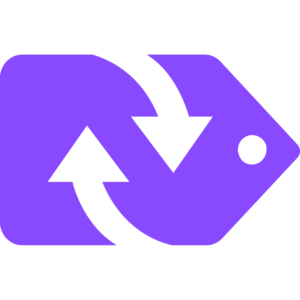This article is a practical and easy-to-use guide to common terms used in the e-commerce industry and that you might come across when using Repricer.
FBA
FBA is the abbreviation for Fulfilled by Amazon. This means that Amazon store and deliver the product to the customer on behalf of the merchant.
FBM
FBA is the abbreviation for Fulfilled by Marchant. This means that the merchant stores, packs, and ships the order to the customer when the order is placed.
MFN
An older but still commonly used abbreviation for Merchant Fulfillment Network, this is the same as FBM.
Seller-Fulfilled Prime
Where an FBM seller qualifies for Amazon Prime Shipping - many sellers ask if it is possible to reprice only against seller-fulfilled prime sellers but this is not possible as Amazon do not share this information through their API
Price War
A situation when you and your competitors are reducing prices very rapidly causing your price to drop and hit Min quickly.
SKU
SKU is the abbreviation for “Stock Keeping Unit”. In general terms, customers will just be referring to a product in general.
ASIN
ASIN is the abbreviation for “Amazon Standard Identification Number.” This a 10 digit unique identifier for a product on Amazon marketplaces.
Merchant ID
Each Amazon seller has a unique merchant ID. Clients can use a rival seller’s merchant ID to compete against them in a specific way when they make their own custom Repricer.
Seller Central
This is a merchant’s seller account on Amazon, from which they manage their account.
VAT
Value-added tax - sales tax in UK/IRL - usually just called ‘Sales Tax’ by USA customers.
CSV file
CSV is the abbreviation for "Comma Separated Values". It is a simple file format used to store tabular data, such as a spreadsheet or database.
New, Used-Like New, Used-Very Good, Used-Good, Used-Acceptable, Refurbished, Collectible
These would be the item conditions on eBay.
New, Renewed, Rental, Used-Like New or Open Box, Used-Very Good, Used-Good, Used-Acceptable
These would be the item conditions on Amazon.
Landed Price
The total landed/selling price of a product i.e. shipping + product price.
Algorithmic
A pre-programmed Repricer with ready-made rules. The rules take into consideration all known criteria that Amazon uses when deciding Buy Box ownership. It uses the best industry knowledge to define the strategy of how products compete.
Buy Box
The Buy Box on Amazon is the button that is displayed beside a product that says “Add to basket.”
Amazon assigns one seller to the Buy Box per product i.e. when a buyer clicks this button, the sale will go to the seller who Amazon has featured on the product page. E.g. Fancy Dress Magic Ltd.
The Buy box is the Holy Grail for sellers as most sales on Amazon go through the buy box. Many statistics show that up to 80% of total sales on Amazon are made in the BuyBox.
RRP
RRP is the abbreviation for Recommend Retail Price. This would be how much the item should be selling for. Often called MAP (Minimum Advertised Price) in the USA.
MAP
MAP is the abbreviation for Manufacturer’s Advertised Price. This is where the seller must have a selling price set by the product manufacturer at certain times/days of the week - the scheduler is used to move from static MAP prices to changing prices when the MAP prices do not apply.
Unit cost
This would be how much it cost to purchase the item.
Shipping cost
This would be how much it cost to ship the item to your buyer.
Pick pack cost
This would be how much it costs to take this item off the warehouse shelf and package it up for your buyer. This includes the price of the packaging, and also the wages of the person who had to do this work.
Estimated FBA fees
This would be how much you pay to Amazon in order to store and ship your items if you use FBA.
Variable closing fee
This would only apply to media items. Sellers of these items must pay a standard fee.
Listing Fee %
This would be the per item selling fee that Amazon charges you for listing your product.




